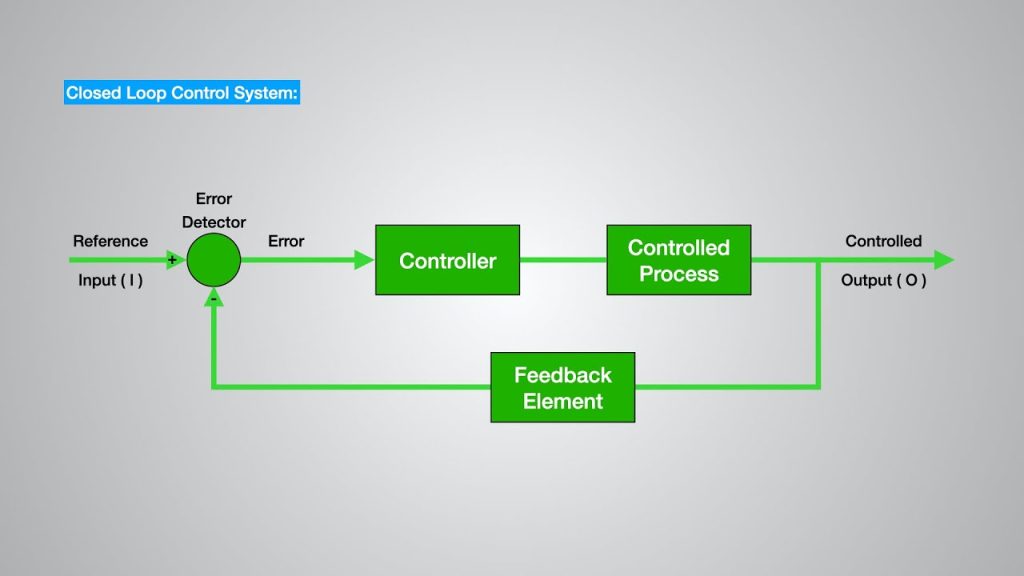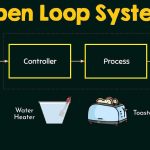Control system in which the output has an effect on the input quantity in such a manner that the input quantity will adjust itself based on the output generated is called closed loop control system. Open loop control system can be converted in to closed loop control system by providing a feedback. This feedback automatically makes the suitable changes in the output due to external disturbance. In this way closed loop control system is called automatic control system. Figure below shows the block diagram of closed loop control system in which feedback is taken from output and fed in to input.
Practical Examples of Closed Loop Control System
- Automatic Electric Iron – Heating elements are controlled by output temperature of the iron.
- Servo Voltage Stabilizer – Voltage controller operates depending upon output voltage of the system.
- Water Level Controller – Input water is controlled by water level of the reservoir.
- Missile Launched and Auto Tracked by Radar – The direction of missile is controlled by comparing the target and position of the missile.
- An Air Conditioner – An air conditioner functions depending upon the temperature of the room.
- Cooling System in Car – It operates depending upon the temperature which it controls.
Advantages of Closed Loop Control System
- Closed loop control systems are more accurate even in the presence of non-linearity.
- Highly accurate as any error arising is corrected due to presence of feedback signal.
- Bandwidth range is large.
- Facilitates automation.
- The sensitivity of system may be made small to make system more stable.
- This system is less affected by noise.
Disadvantages of Closed Loop Control System
- They are costlier.
- They are complicated to design.
- Required more maintenance.
- Feedback leads to oscillatory response.
- Overall gain is reduced due to presence of feedback.
- Stability is the major problem and more care is needed to design a stable closed loop system.
Comparison of Closed Loop And Open Loop Control System
| Sr. No. | Open loop control system | Closed loop control system |
| 1 | The feedback element is absent. | The feedback element is always present. |
| 2 | An error detector is not present. | An error detector is always present. |
| 3 | It is stable one. | It may become unstable. |
| 4 | Easy to construct. | Complicated construction. |
| 5 | It is an economical. | It is costly. |
| 6 | Having small bandwidth. | Having large bandwidth. |
| 7 | It is inaccurate. | It is accurate. |
| 8 | Less maintenance. | More maintenance. |
| 9 | It is unreliable. | It is reliable. |
| 10 | Examples: Hand drier, tea maker | Examples: Servo voltage stabilizer, perspiration |
Feedback Loop of Control System
A feedback is a common and powerful tool when designing a control system. Feedback loop is the tool which take the system output into consideration and enables the system to adjust its performance to meet a desired result of system.
In any control system, the output is affected due to change in environmental condition or any kind of disturbance. So one signal is taken from the output and is fed back to the input. This signal is compared with a reference input and the error signal is generated. This error signal is applied to controller and output is corrected. Such a system is called feedback system. The figure below shows the block diagram of a feedback system.
When the feedback signal is positive then system called positive feedback system. For positive feedback system, the error signal is the addition of reference input signal and a feedback signal. When the feedback signal is negative then the system is called negative feedback system. For negative feedback system, the error signal is given by the difference of reference input signal and the feedback signal.


